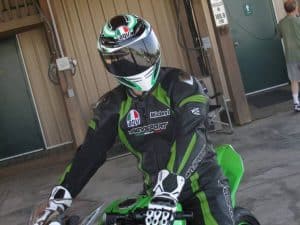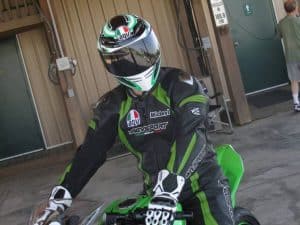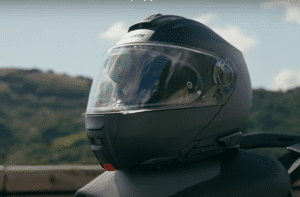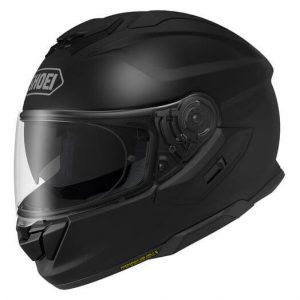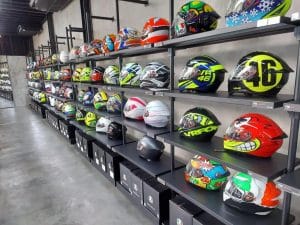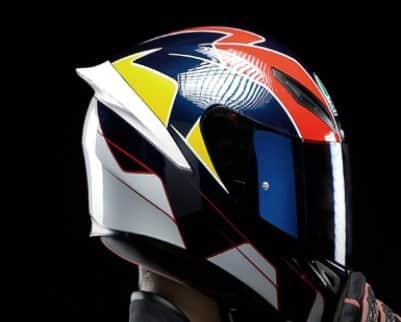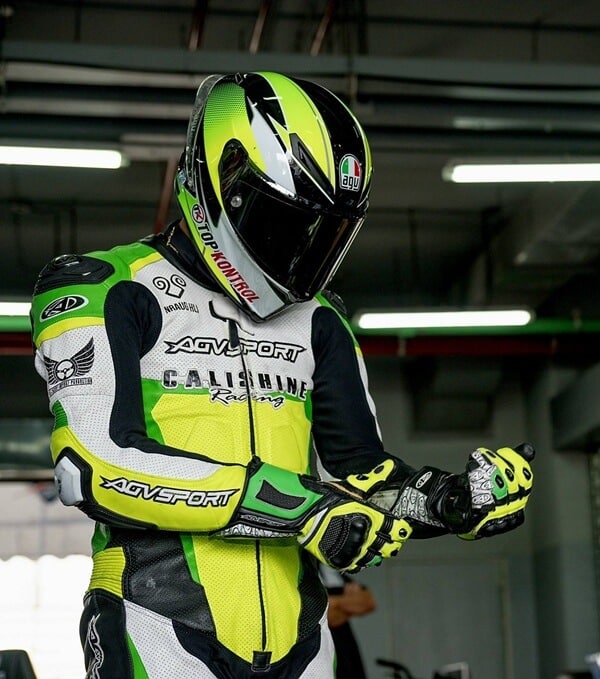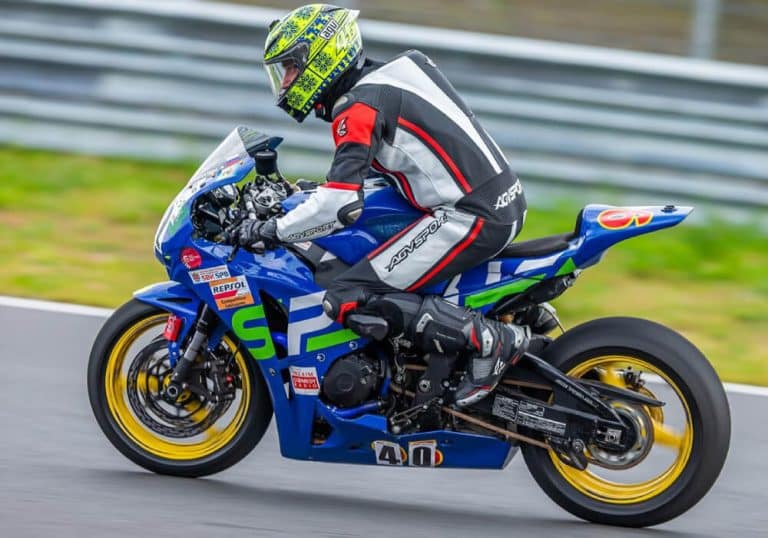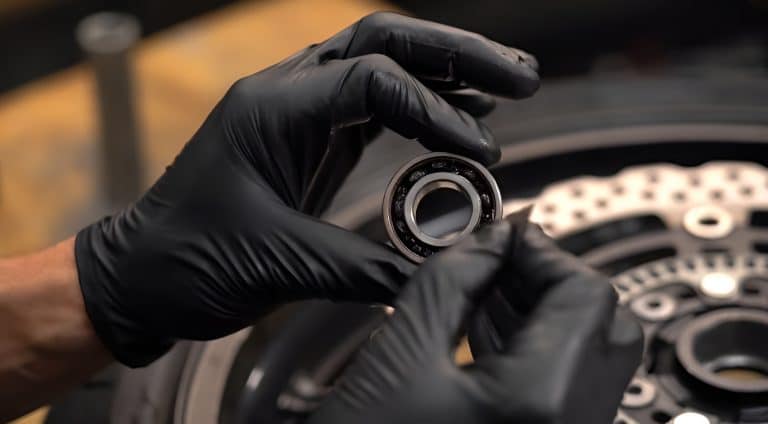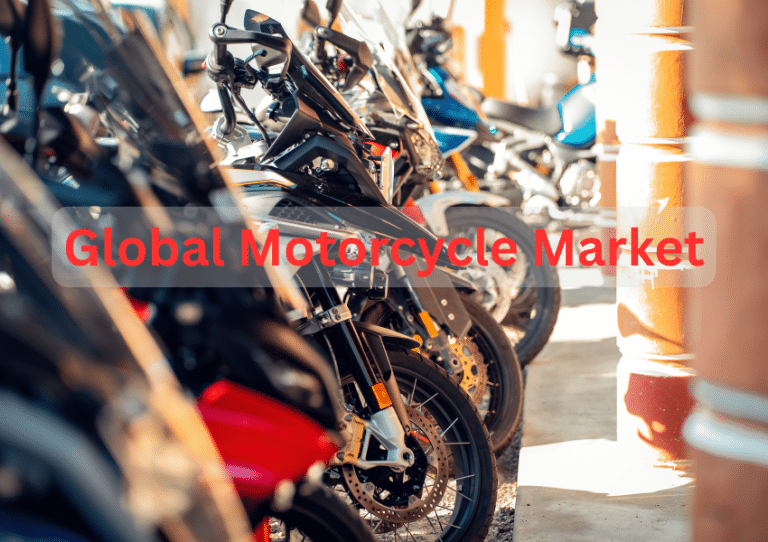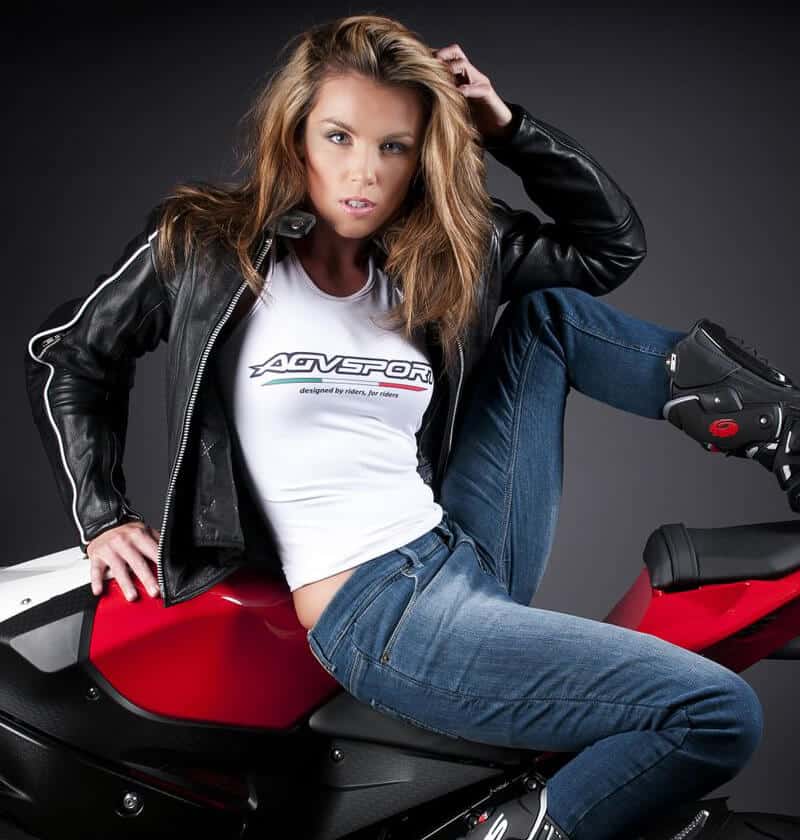Walking into Royal Enfield’s EICMA 2025 booth in Milan, my eyes were immediately drawn to a familiar silhouette: the all-new 2026 Bullet 650. At first glance, it looked every bit the timeless Bullet, with a thickly padded bench seat, teardrop tank with gold pinstripes, winged 3D badge, and the classic “casquette” headlamp with twin LED “tiger-eye” pilot lamps. Yet something in its stance felt more substantial. There’s more upright poise, more chrome, and a refined finish that says “modern twin,” not museum-piece retro. It feels intentional, heritage evolved, not recycled, a motorcycle meant to be admired as much as ridden.
In person, especially in the Battleship Blue and Cannon Black finishes, the Bullet carries the soul of the original, but you immediately sense it rides on a broader foundation. When Royal Enfield officially unveiled it on November 4, 2025, it became clear this was the most muscular Bullet to date. The iconic single-cylinder is gone, replaced by the proven 648 cc parallel-twin used in the Interceptor, Classic 650, and Super Meteor. It also brings real presence, roughly 243 kg wet, but carries its weight with confidence.
Seeing it up close feels like watching a legend modernize in real time. It still radiates that unmistakable Bullet identity, but subtle updates like LED lighting and a discreet digital dash quietly signal the engineering progress beneath the nostalgia.

Royal Enfield Unveils the Bullet 650 at EICMA 2025
Royal Enfield Bullet 650’s EICMA reveal highlighted exactly that blend of old and new. The company celebrates its 125th anniversary next year with a range of models, headlined by the Bullet 650, “a tribute to impeccable British lineage and indomitable Indian soul,” as their press release poetically put it.
In Milan, RE’s team emphasized that every curve of the new Bullet was “designed in harmony with its parallel-twin heart,” preserving the hallmarks that made this bike an icon. And the show bike’s pewter-grey bodywork and bright chrome exhausts underscored this message: rugged yet refined. Royal Enfield’s literature notes that the Bullet 650 “carries its legendary DNA forward in every detail,” from the vintage-inspired bench seat and nacelle headlamp to the rigid steel spine frame and wire-spoked wheels.
Visually, the Bullet 650 is classic from nose to tail. It keeps the long all-metal body, the signature flat bench saddle and upright riding stance. The headlamp nacelle and twin “tiger-eye” pilot lamps directly echo the postwar Bullets of the 1950s. New touches are mostly functional: the headlamp now uses an LED unit for better illumination, and the meters blend analog speedo/tach with a small LCD for gear, fuel, trip, etc.
Beyond its traditional styling cues, the Bullet 650’s hardware stays familiar and proven. From a technical standpoint, the essentials are straightforward. Power comes from the same 648 cc air-/oil-cooled SOHC parallel-twin that drives the Interceptor, Classic 650, and Super Meteor, tuned here for about 46.3 bhp at 7,250 rpm and 38.5 lb-ft of torque at 5,650 rpm. It’s paired with a six-speed gearbox and an assist-and-slipper clutch for smoother engagement.
Suspension is by Showa, with 41 mm front forks offering 120 mm travel, while the rear gets twin gas-charged units with 112 mm travel. Braking is handled by a 320 mm front disc and 300 mm rear disc, both with dual-channel ABS. A 19-inch front and 18-inch rear wheelset reinforces its classic proportions, and a generous 14.8-liter tank promises long-range touring ease.
Underneath, the Bullet 650 uses the same steel tubular spine frame found on RE’s big 650 twins. Its twin peashooter exhausts (short chrome mufflers on each side) give the bike a distinctive look and sound. Royal Enfield emphasizes that styling details like the hand-painted gold pinstripes, sculpted fuel tank and raised handlebars give the rider a commanding presence on the road.
All in all, the new Bullet looks and feels like an authentic Bullet, the same old-school charm, now carrying more torque and modern convenience.
Key Highlights of the 2026 Royal Enfield Bullet 650
To cut through Royal Enfield’s exhaustive press release, here’s what matters most:
| Category | Details | Rider Benefit |
| Engine | 648 cc air-/oil-cooled SOHC parallel-twin, 8-valve; fuel-injected, Euro 5+ compliant; 46.3 hp @ 7,250 rpm, 38.5 lb-ft @ 5,650 rpm (52.3 Nm) | Smooth, torquey power across the rev-range from low to mid RPM ideal for relaxed highway cruising and everyday usability. More pull than the old 350, yet still easy to ride (A2-compliant). |
| Exhaust | Twin “peashooter” chrome mufflers (one per side) with new internal baffles. | Classic Bullet look and a deep, distinctive exhaust note that matches the bike’s vintage character. |
| Transmission | 6-speed constant-mesh gearbox (same unit as Interceptor/Classic 650) with light slipper-clutch (assist-and-slipper) and chain final drive. | Effortless shifts both up and down. The slipper clutch smooths out downshifts, making roll-on power delivery and highway cruising relaxed. |
| Frame & Chassis | Steel tubular spine frame with all-metal body panels. Front wheel 19″, rear 18″ on spoke rims. | Proven, sturdy Bullet chassis keeps the ride composed; 19″ front wheel and traditional geometry give stable handling on highway and bad roads alike. |
| Electronics | Dual-channel ABS, optional Tripper turn-by-turn navigation; no ride modes | Simplicity and reliability. Electronics only where they enhance usability |
| Suspension | Showa 43 mm telescopic forks (non-adjustable, 120 mm travel) and dual rear shocks (112 mm travel). | Tuned for comfort: soaks up bumps and provides stable cornering feedback, consistent with a classic upright bike. |
| Brakes | Dual-channel ABS. Single 320 mm front disc (twin-piston caliper) and single 300 mm rear disc (twin-piston). | Adequate stopping power for a bike of this era. ABS adds safety, though a single disc setup favors simplicity and old-school looks over maximum brake bite. |
| Wheels & Tires | Spoked wheels: 100/90-19 front, 140/70-18 rear (tube-type). | Vintage styling and the ability to use tube-type or off-road tires. The large front wheel rolls over ruts smoothly and helps stability. |
| Styling & Ergonomics | Long bench seat (step-up design) for two, raised handlebars, teardrop tank with winged badge, hand-painted gold pinstripes | Timeless Bullet aesthetic and an upright, open riding position. The bench seat and bars give the rider a confident, commanding posture and comfort for longer rides. |
| Instrumentation & Lighting | Dual analog gauges + central LCD for gear, trip, fuel, service reminders; USB Type-C charging port; LED taillight and turn signals; hazard/emergency flashers. Full LED headlamp with “tiger-eye” DRLs | Classic-look cockpit with modern convenience. Essential info is easy to read at a glance, and features like USB power and hazard lights meet modern expectations without cluttering the style. |
| Weight & Dimensions | 243 kg (kerb); 800 mm seat height; 14.8 L fuel tank | Solid, reassuring road presence; manageable seat height for most riders |
Royal Enfield Bullet 650 Engine and Performance
Under the tank is the same 648 cc single-overhead-cam parallel-twin used in RE’s other 650 twins (Interceptor, Classic 650, and Super Meteor), making about 46.3 bhp at 7,250 rpm and 38.5 lb-ft of torque at 5,650 rpm. Royal Enfield did not increase power for the Bullet. In fact, these numbers are identical to the Interceptor 650, but the result is a very tractable, smooth power delivery. The torquey engine means the Bullet pulls cleanly from low RPM and doesn’t need high revs to scoot down the road. RE describes the twin as delivering “smooth power and effortless acceleration…ideal for both relaxed and spirited rides.”
The six-speed gearbox works well with the engine’s character. A light slipper (assist-and-slipper) clutch is fitted as standard, making downshifts surprisingly smooth and clutch action easy, especially in traffic or hillclimbs. There’s no quickshifter or multiple riding modes. The Bullet is all cable-and-mechanicals under the hood, so rider input is straightforward.
Fuel is metered by electronic injection, and throttle by wire is not used here (it’s a throttle-cable bike), which keeps the feel traditional. The final drive chain is ordinary steel, and maintenance is basic (chassis grease points, chain lube, etc.).
All told, the powertrain should feel familiar to anyone who’s ridden a Classic 650 or Interceptor: measured power, not flashy, but ample for highway cruising and effortless in town. The engine’s character, combined with the Bullet’s heavy cruiser-like weight, means performance is about comfort and authenticity. Don’t expect the rush of a sportbike, but do expect a satisfying rumble and pull through corners.
Royal Enfield Bullet 650 Chassis, Suspension, and Ergonomics
The Bullet 650 sits on a traditional steel tubular spine frame, the same basic architecture used by RE’s 650 twins (Interceptor, Classic 650, and Super Meteor). Its dimensions (1,480 mm wheelbase, 57.7”) give a stable, planted feel.
At 243 kg (536 lb) kerb weight, it’s on the heavy side; heavier than the Interceptor or the 350 cc Bullets, but that weight lends the Bullet a composed ride at speed and a solid feel at rest. The forks are Showa 43 mm tubes with 120 mm travel, and the rear uses dual shocks with about 112 mm travel. These are tuned for a compliant ride, easily absorbing bumps and potholes.
The saddle is a classic flat bench seat (step-up style) that is “sumptuous” and well-cushioned, plus slightly higher handlebars give an open, upright stance. This setup means very relaxed ergonomics: you sit tall with a bit of reach to the grips and feet roughly under your hips (mid-mounted pegs). It’s ideal for rolling down country roads or cruising in traffic, with no finger fatigue thanks to the wide-grip throttle and generous lever spacing. The 800 mm seat height and broad seat also help shorter riders place a foot down easily, while the 14.8-liter tank promises respectable range between fill-ups.
Brakes, Wheels, and Tires
In keeping with its retro roots, the Bullet 650 uses classic wheel sizes: a 19” front and 18” rear on wire-spoke rims. It wears tube-type tires (100/90-19 front and 140/70-18 rear) that can be replaced with off-road knobbies if desired.
Braking is simple: a single 320 mm front disc with a two-piston caliper, and a single 300 mm rear disc (two-piston). Dual-channel ABS is standard. These brakes deliver adequate stopping power for the bike’s weight and style, though by modern sportbike standards, they’re modest. It won’t yank to a stop like a superbike. You get predictable, fade-resistant braking with classic feel (steel-braided lines and a tidy lever) and the confidence of ABS when panic-stopping.
The bulky spoke wheels and taller front tire help smooth out rough surfaces and add a touch of off-road capability, though the Bullet is fundamentally a road bike.
Electronics and Features
The Bullet 650 keeps it Spartan. There are no riding modes, traction control or ride-by-wire throttle, just the essentials. Instrumentation is a blend of form and function: two large analog gauges (speedometer and tach) flank a small LCD panel that shows fuel level, trip meters, clock, gear position indicator and a service warning light.
The bike includes modern necessities like dual USB-C charging in the cockpit, LED lighting front and rear, and an emergency/hazard flasher switch (required in Europe). Notably, there’s no built-in navigation pod or Bluetooth (unless fitted as an accessory), so this is an analogue experience. Hazard lights and a bright LED headlamp/signal lamps do enhance safety.
In short, the Bullet 650 adds just enough tech to be convenient without diluting its retro charm.
Royal Enfield Bullet 650 Availability and Pricing
Royal Enfield confirmed Bullet 650 production for global markets beginning in early 2026, with European deliveries scheduled first, followed by the U.S. and India later in the year. In the UK, the Bullet 650 is expected to start around £6,749, positioning it between the Classic 650 and the Super Meteor. U.S. pricing is anticipated to hover near $7,499, while India’s ex-showroom estimates place it close to ₹3.4 lakh. That keeps the Bullet competitively priced within Royal Enfield’s twin lineup, offering heritage and refinement at a reachable price point.
Side-by-Side: Bullet 650 vs. Interceptor / Classic / Super Meteor (At a Glance)
| Category | Bullet 650 | Interceptor 650 | Classic 650 | Super Meteor 650 |
| Engine (cc) | 648 cc parallel-twin | 648 cc parallel-twin | 648 cc parallel-twin | 648 cc parallel-twin |
| Power (approx) | 46.3 bhp @ 7,250 rpm / 38.5 lb-ft | 47 bhp (varies slightly by market) | 47 bhp | 47 bhp |
| Wheels | 19″ front / 18″ rear | 18″ / 18″ (roadster setup) | 19″ front / 18″ rear | Larger cruiser wheels (16–18″ depending on trim) |
| Suspension | 41 mm Showa fork; twin rear shocks | Telescopic fork; twin shocks (roadster tuning) | Similar to Bullet (heritage geometry) | Cruiser-tuned setup; longer travel for comfort |
| Brakes | 320 mm front / 300 mm rear; dual-channel ABS | 320 mm front / 240–300 mm rear; ABS | 320 mm front / 300 mm rear; ABS | 320 mm front / rear disc; ABS |
| Kerb Weight / Seat Height | 243 kg / 800 mm | 202 kg / 804 mm (varies by spec) | Similar to Interceptor, retro ergonomics | Heavier overall; lower seat height on some trims |
| Character & Positioning | Heritage-forward twin revival | Sportier roadster twin | Traditional retro modern classic | Relaxed cruiser with touring intent |
Royal Enfield Bullet 650 First Impressions: Strengths and Potential Drawbacks
Strengths:
- The new Bullet 650’s biggest asset is its unmistakable style and character. It’s a true Bullet in every visual detail, now powered by a torquey twin – a combination few others offer.
- The 648 cc engine gives it heartier performance than any previous Bullet (or compared to smaller rivals like the Triumph Speed 400 or Meteor 350), and yet remains gentle and easy to use.
- The bench seat and ergonomics make for a very comfortable riding position, especially for two-up cruising.
- Features like the slipper clutch, LED lights, and USB power, though modest, are pleasant modern touches that enhance everyday usability.
- The large spoke wheels and steel frame imply robustness, ideal for patchy roads or light adventure riding.
- Royal Enfield also managed to keep the cost reasonable; it starts around £6,749 in the UK (about US$7,499), which many will consider good value for such a distinctive, big-bike feel.
- The Bullet 650 benefits from proven components (engine, chassis, electronics) shared with other 650 models, suggesting reliability and parts availability should be strong.
Potential Drawbacks:
- At 243 kg wet, the Bullet 650 is very heavy for a sub-50 hp bike. The power-to-weight ratio is modest, so acceleration is leisurely (think comfortable cruiser, not sportbike).
- I’m used to modern bikes, so I might find its performance uninspiring on twisty roads; it lacks the urgency or high-revving nature of more spirited twins.
- Stopping performance is adequate but unremarkable. I would wish for a second front disc on such a heavy motorcycle.
- The suspension travel (120/112 mm) and 19”/18” wheels signal that this isn’t a hardcore off-roader; it’s more road-biased.
- Lack of rider aids: there’s no traction control, ride modes, or advanced electronics (e.g. cornering ABS), so everything depends on your skill.
- While the $7,499 or so price is competitive, it’s not exactly cheap for a basic cruiser. You get retro style, but you could also find more modern features on other bikes in that range.
In short, the Bullet 650 will delight enthusiasts of classic bikes and easy riding, but it won’t satisfy those seeking cutting-edge tech or supersport performance.
2026 Royal Enfield Bullet 650 Full Specifications
Below is a summary of the Bullet 650’s core specs for 2026:
| Category | Specification |
| MSRP | Europe/UK: £6,749 (Cannon Black). North America: US$7,499. India: ₹3.4 lakh |
| Engine Type | 648 cc air/oil-cooled parallel-twin, 4-stroke, SOHC (single cam per bank) |
| Bore x Stroke | 78.0 mm × 67.8 mm |
| Compression Ratio | 9.5 : 1 |
| Power Output | 34.6 kW (46.6 hp) @ 7,250 rpm |
| Torque | 52.3 Nm (38.6 lb-ft) @ 5,650 rpm |
| Fuel System | Electronic fuel injection, throttle-cable (non-ride-by-wire) |
| Starting | Electric starter |
| Transmission | 6-speed manual, constant-mesh; wet multi-plate clutch with assist-and-slipper; chain final drive |
| Frame | Steel tubular spine frame (bullet-style spine frame) |
| Front Suspension | Telescopic fork, 43 mm; Travel: 120 mm |
| Rear Suspension | Dual shock absorbers, adjustable preload; Travel: 112 mm |
| Rake / Trail | Not specified by RE (estimated 28° / 4.5 in) |
| Front Brake | Single 320 mm disc, twin-piston floating caliper; dual-channel ABS |
| Rear Brake | Single 300 mm disc, twin-piston floating caliper; dual-channel ABS |
| Front Tire | 100/90-19 (tube-type) |
| Rear Tire | 140/70-18 (tube-type) |
| Wheelbase | 1,480 mm (58.3 in) |
| Seat Height | 800 mm (31.5 in) |
| Fuel Capacity | 14.8 L (3.9 gal) |
| Kerb Weight | 243 kg (536 lb) [as specified by RE, with 90% fluids] |
| Electrical System | 12 V battery (12 Ah); LED headlamp/taillamp; twin analog gauges + LCD display (fuel, gear, trip; USB-C charging; hazard flasher |
Information for this article was partially sourced and researched from the following authoritative government, educational, corporate, and non-profit organizations:
M/A

